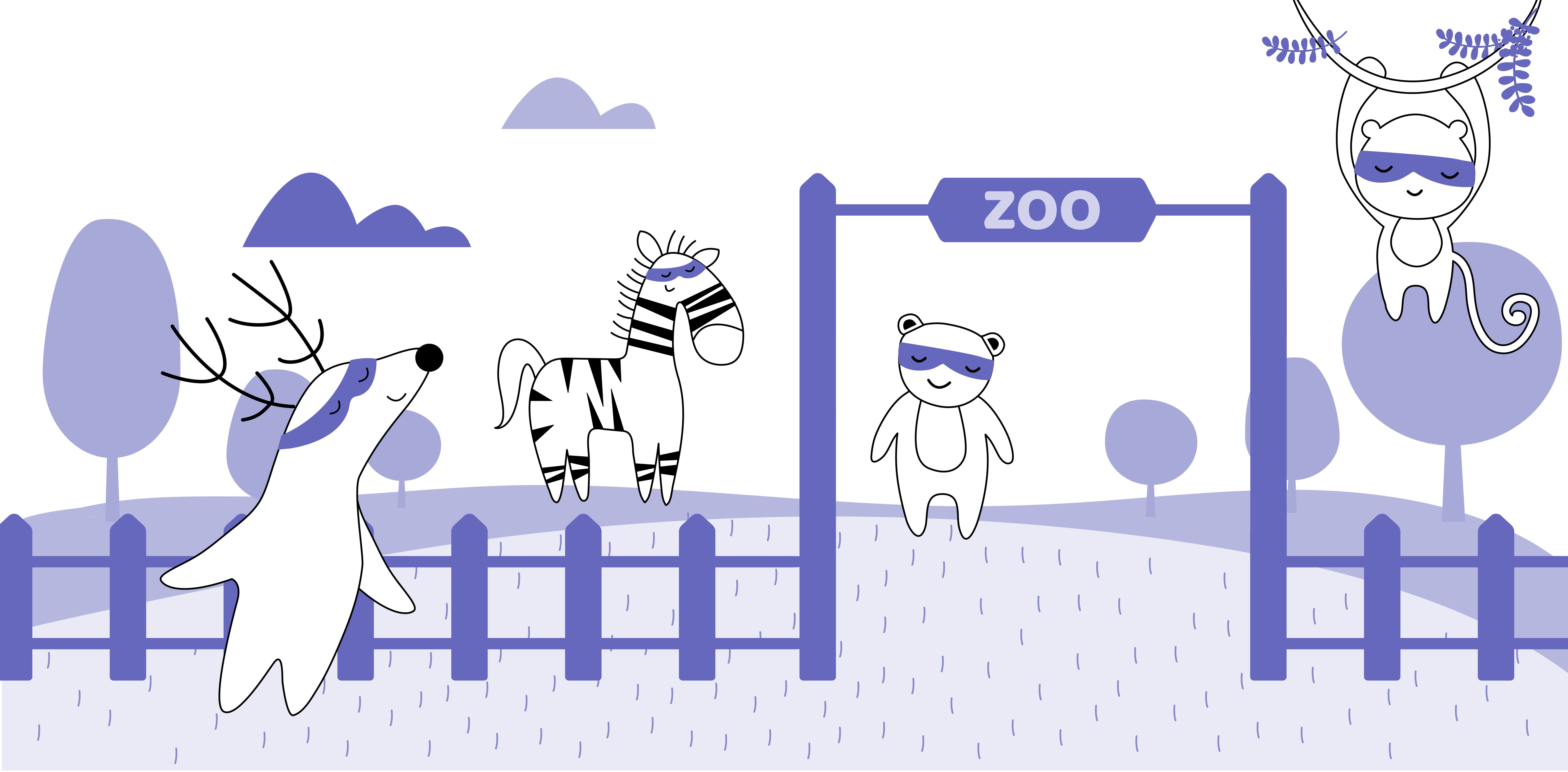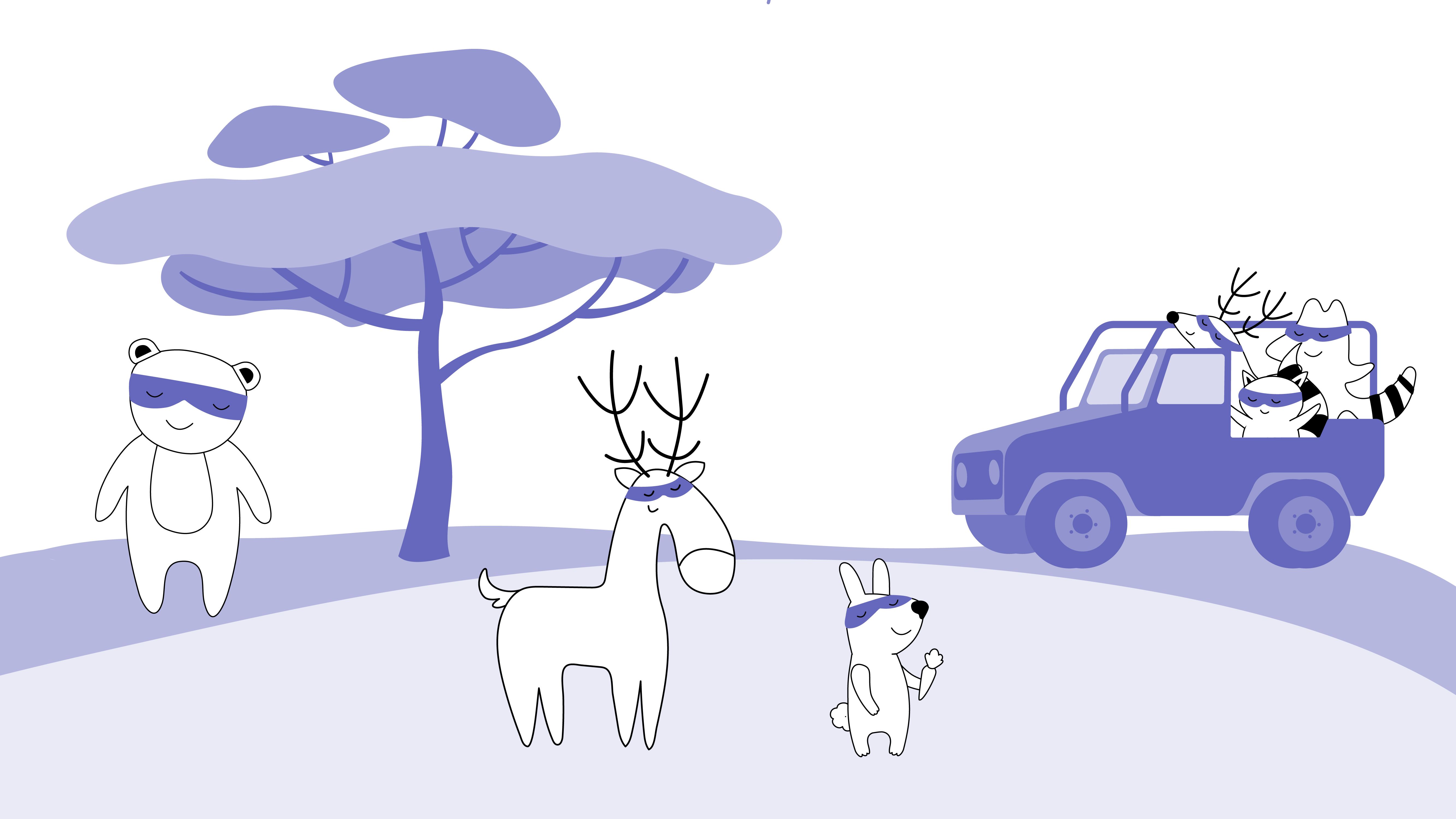
Welcome to our educational guide on learning the names of animals in Spanish! Whether you're a language enthusiast, a budding linguist, or someone planning a trip to a Spanish-speaking country, knowing the names of common animals in Spanish can be a fun and valuable addition to your vocabulary skills.
In the following sections, we will take a journey through the animal kingdom on a quest to familiarize ourselves with a variety of creatures, big and small, land-dwelling and aquatic, all while enhancing our Spanish language prowess.
From domestic pets to exotic wildlife, this guide is designed to help you navigate conversations about animals with ease and confidence in any Spanish-speaking environment.
Learn Spanish with Langster
Why Learn Animals in Spanish?
Learning the names of animals in Spanish offers numerous benefits. For starters, it enhances your vocabulary, making you a more confident and competent speaker of the language. It can also add an element of fun to your learning process as you discover new Spanish terms and relate them to familiar animals.
On a practical note, this knowledge can be useful in various situations, such as when visiting a zoo, watching a wildlife documentary, or even engaging in casual conversations with native Spanish speakers.
Whether you're an animal lover, a language enthusiast, or a traveler preparing for a trip to a Spanish-speaking country, this linguistic skill can enrich your communication experience and foster deeper connections with the people and environment around you.
Domestic Animals

When we think of domestic animals, we often picture the furry companions with whom we share our homes — cats, dogs, rabbits, and the like.
Understanding these animal names in Spanish not only allows you to expand your vocabulary but also enables you to communicate more effectively in many everyday situations. Here are some common domestic animals in Spanish:
Spanish
English
El perro
Dog
El gato
Cat
El conejo
Rabbit
El hámster
Hamster
El pez
Fish
El cobayo
Guinea pig
La tortuga
Turtle
Farm Animals
Farm animals, known as animales de granja in Spanish, play a crucial role in our everyday lives. They provide us with food, help with labor, and offer companionship. From la vaca (the cow), which gives us milk and beef, to el pollo (the chicken), a source of eggs and poultry meat, each farm animal has been bred for a unique purpose.
Here are some common farm animals in Spanish:
Spanish
English
La vaca
Cow
El pollo
Chicken
El cerdo
Pig
El caballo
Horse
La oveja
Sheep
El pato
Duck
El pavo
Turkey
La cabra
Goat
El burro
Donkey
El gallo
Rooster
Most Common Domestic Animals in Latin America
In Latin America, domestic animals have a profound cultural and social significance, often playing a crucial role in both rural and urban settings. The most common domestic animals found in Latin America include dogs (perros), cats (gatos), and rabbits (conejos), which are often kept as pets.
In rural areas, horses (caballos) are prevalent, used historically for work and transportation. You will also find cows (vacas) and pigs (cerdos) being raised for their meat and other products, such as milk and leather.
Sheep (ovejas) are bred for their wool, milk, and meat, particularly in the Andean regions of Peru, Bolivia, and Ecuador. Hens (gallinas) and ducks (patos) are commonly raised for their eggs and meat, while turkeys (pavos) are typically reared for festivities and celebrations.
Each of these animals has a unique role in the lives of Latin American people, varying from region to region and between urban and rural areas.
Wild Animals in the Forest

Forests are home to a rich variety of wildlife, offering a vibrant, diverse, and often unseen world that exists in the depths of these natural habitats. In Spanish, the forest is home to many different species—from el oso (the bear) and el lobo (the wolf) to el ciervo (the deer) and la ardilla (the squirrel)—teeming with an array of wildlife that often symbolizes the untamed beauty and mystery of nature.
Here are some examples of Spanish animal names:
Spanish
English
El oso
Bear
El lobo
Wolf
El ciervo
Deer
La ardilla
Squirrel
El zorro
Fox
El conejo silvestre
Wild rabbit
El tejón
Badger
El mapache
Raccoon
La serpiente
Snake
El pájaro
Bird
Wild Animals in the Jungle
Venturing into the jungle, we encounter an entirely different ecosystem brimming with a diverse range of exotic and captivating creatures. The Spanish term for “jungle” is la selva, and it serves as a home for an abundance of animales salvajes, or wild animals. From el tigre (the tiger) to el mono (the monkey), the jungle teems with life and presents a world full of wonder to explore.
Jungle habitats are renowned for their biodiversity, housing species that are not only fascinating but also crucial to the health and balance of our planet.
Learning the Spanish names of these animals can open up a whole new world of understanding and appreciation for these incredible ecosystems. Let's take a virtual tour and meet some of these wild animals that inhabit the jungle:
Spanish
English
El tigre
Tiger
El león
Lion
El mono
Monkey
El jaguar
Jaguar
El puma
Puma
La boa
Boa
El loro
Parrot
El cocodrilo
Crocodile
La rana
Frog
El perezoso
Sloth
El tucán
Toucan
Aquatic Animals

The world's oceans, rivers, and lakes are home to a wide variety of aquatic animals, offering a glimpse into a vibrant and diverse underwater world. In this section, we'll introduce you to some of the most common and intriguing aquatic animals in Spanish.
From el tiburón (the shark) to la tortuga (the turtle), sea animals form a significant part of our planet's ecosystem and offer some of the most fascinating spectacles of nature.
Spanish
English
El tiburón
Shark
El delfín
Dolphin
El pez
Fish
La ballena
Whale
El pulpo
Octopus
El cangrejo
Crab
La medusa
Jellyfish
El pingüino
Penguin
La foca
Seal
Vocabulary Related to Animals
Understanding Spanish animal vocabulary is not only about knowing the names of the animals themselves but also about familiarizing yourself with terms that describe their lifestyles, diets, and behaviors. These words can greatly enrich your Spanish language skills and allow you to engage in detailed and nuanced conversations.
Here is some essential animal-related Spanish vocabulary:
Spanish
English
El hábitat
Habitat
La alimentación
Diet
El comportamiento
Behavior
La caza
Hunting
El depredador
Predator
La presa
Prey
El nido
Nest
La manada
Herd
El rebaño
Flock
La bandada
Swarm
Each word offers a profound understanding of animal existence, allowing you to articulate or debate certain aspects of their life. For instance, el hábitat signifies the natural environment where an animal resides, la alimentación indicates its diet, and el comportamiento depicts its behavior.
Words such as el depredador and la presa make it possible to discuss the intricate dynamics of food chains, while el nido, la manada, el rebaño, and la bandada are terms employed to denote various kinds of animal groups. This lexicon forms an integral part of any conversation about wildlife, enhancing your Spanish communication precision and efficiency.
Animal Sounds and Onomatopoeia
In addition to animal names and related vocabulary, another fascinating aspect of language is the onomatopoeia associated with animal sounds. These are words that imitate the sounds produced by animals, and they can vary significantly between different languages.
In Spanish, a dog doesn't "bark" but "guau"; a cat doesn't say "meow" but "miau"; and a cow doesn't say "moo" but "mu". Understanding these onomatopoeic words can provide a delightful insight into the auditory world of animals and enhance your Spanish language skills in a fun and engaging way.
Here are some animal sounds and their corresponding onomatopoeia in Spanish:
| Animal in Spanish | Animal in English | Sound |
|---|---|---|
| El perro | Dog | Guau |
| El gato | Cat | Miau |
| La vaca | Cow | Mu |
| El gallo | Rooster | Kikirikí |
| El pato | Duck | Cuá cuá |
| La oveja | Sheep | Bee |
| Animal in Spanish | Animal in English | Sound |
|---|---|---|
| El perro | Dog | Guau |
| El gato | Cat | Miau |
| La vaca | Cow | Mu |
| El gallo | Rooster | Kikirikí |
| El pato | Duck | Cuá cuá |
| La oveja | Sheep | Bee |
Learning animal sounds in Spanish will not only help you understand conversations and stories about animals but also make your experience of learning Spanish more enjoyable and comprehensive.
The Bottom Line

Mastering the vocabulary of animals in Spanish is a fruitful endeavor, opening doors to rich conversations and a deeper understanding of Spanish-speaking cultures.
As we have ventured through the diverse habitats of the wild, the farm, and the ocean, we hope that your Spanish lexicon is now enriched with these fascinating creatures and related terms.
Remember, language learning is a journey that goes beyond mere vocabulary acquisition. It's about understanding the world from a different perspective and gaining insights into diverse cultures.
To continue this fulfilling journey of language discovery, why not download our app, Langster? With Langster, you can learn Spanish and many other languages in an engaging and interactive way. Get access to a comprehensive set of vocabulary, grammar exercises, and pronunciation guidance — anytime and anywhere.
Learn Spanish with Langster









